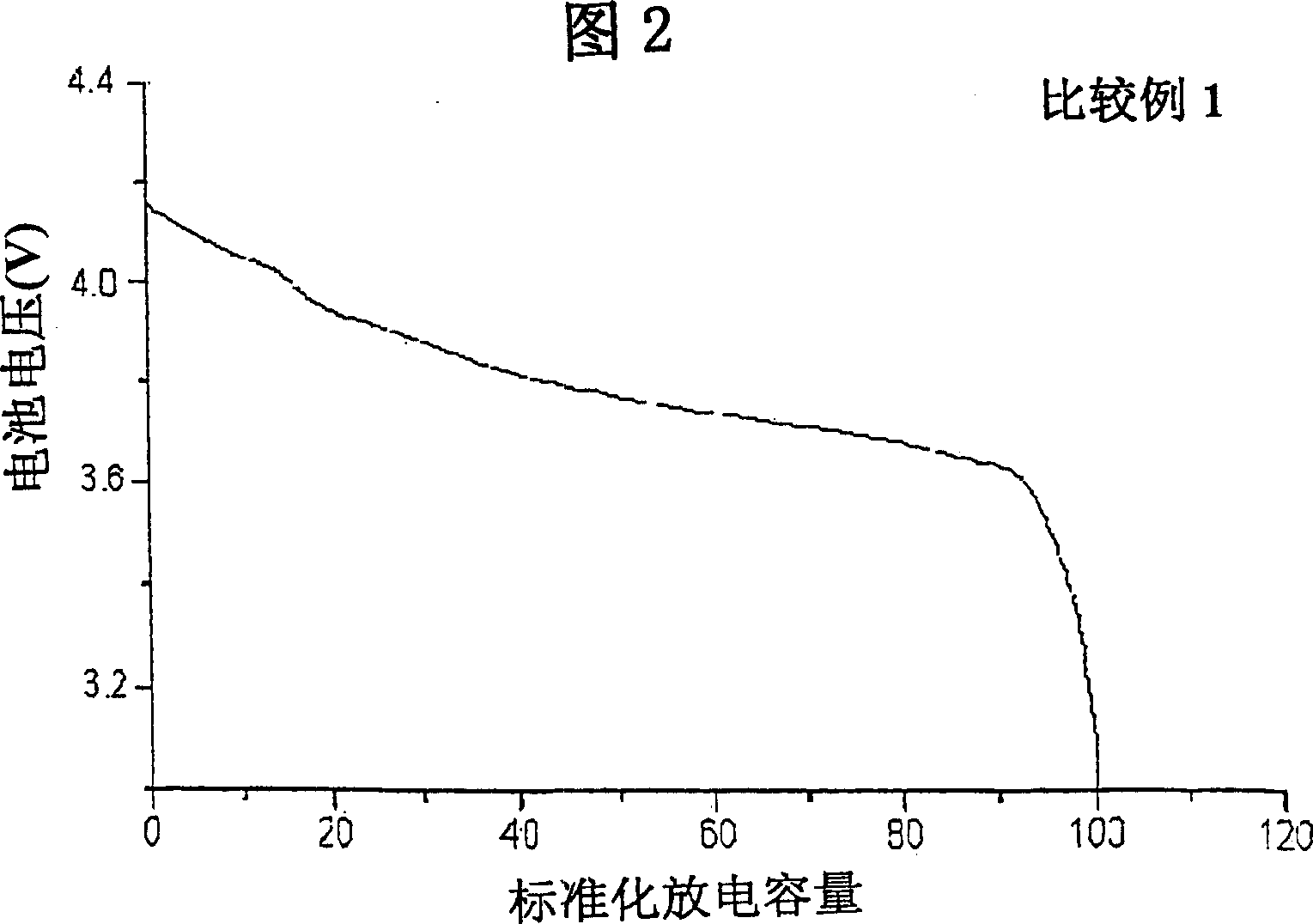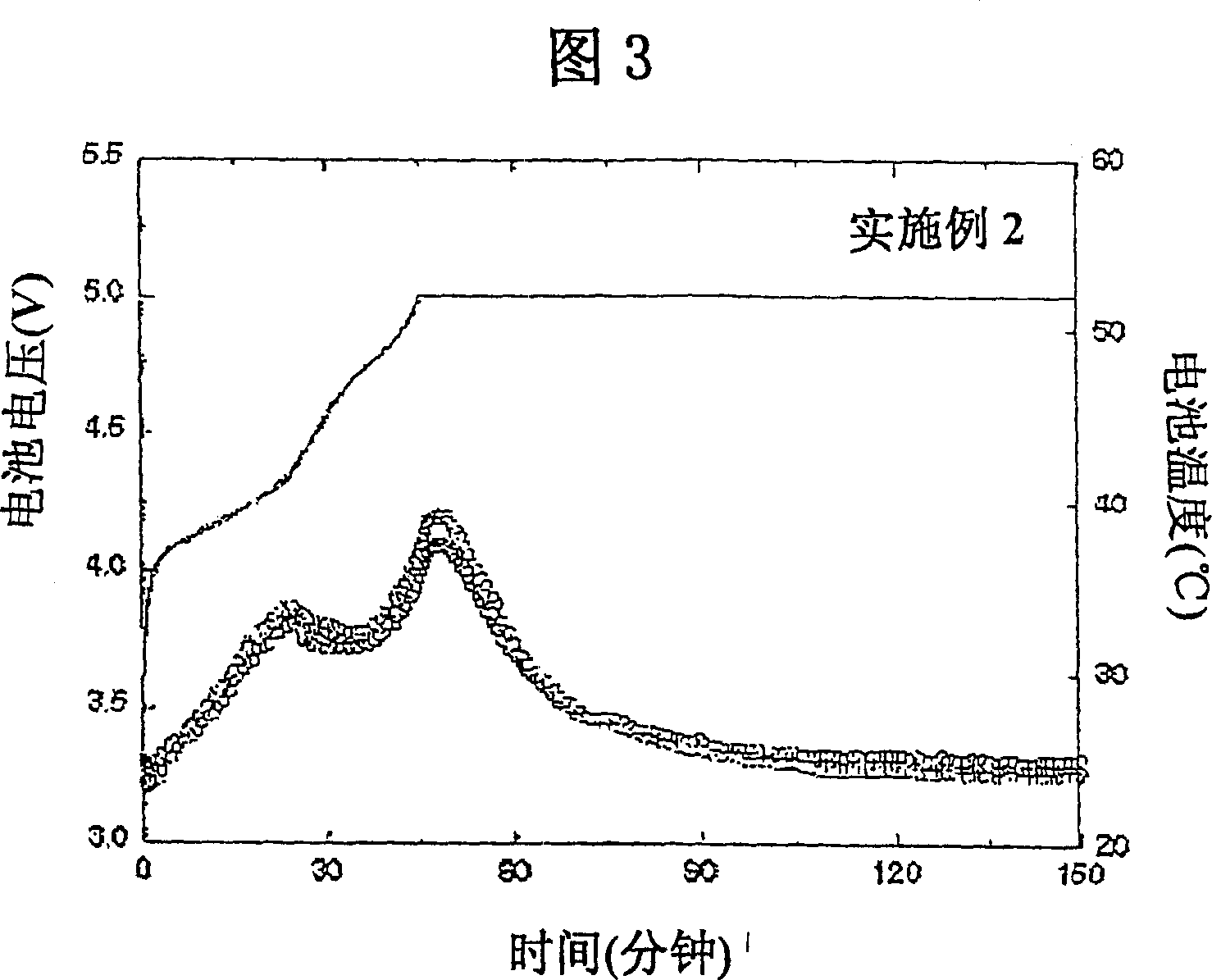Lithium secondary batteries with charge-cutoff voltages over 4.35
A lithium secondary battery, battery technology, applied in the direction of secondary battery, secondary battery repair/maintenance, lithium storage battery, etc., can solve the problems of positive electrode surface deterioration, side reaction, lithium dendrite growth, etc., to improve the average discharge voltage , the effect of preventing security degradation and increasing usable capacity
- Summary
- Abstract
- Description
- Claims
- Application Information
AI Technical Summary
Problems solved by technology
Method used
Image
Examples
Embodiment 1-5
[0066] [Example 1-5. Manufacture of battery with charge cut-off voltage exceeding 4.35V]
Embodiment 1
[0067] Embodiment 1. The lithium secondary battery (1) that the charging cut-off voltage is 4.35V
[0068] (production of positive electrode)
[0069] Mix 95wt% LiCoO with a particle size of 10μm 2 , 2.5wt% conductive agent and 2.5wt% binder to form a slurry. The slurry was uniformly applied on both surfaces of an aluminum foil with a thickness of 15 μm and then calendered to obtain an active material weight of 19.44 mg / cm 2 positive pole. The final positive electrode has a thickness of 128 μm.
[0070] (manufacture of negative electrode)
[0071] 4.0 wt% binder and 0.7 wt% conductive agent were added to 95.3 wt% graphite and mixed to form a slurry. The slurry was uniformly applied on both surfaces of a copper foil with a thickness of 10 μm, followed by calendering to obtain an active material weight of 9.56 mg / cm 2 the negative pole. The weight ratio (A / C) of the positive electrode active material to the negative electrode active material per unit area of the respect...
Embodiment 2
[0076] Embodiment 2. The lithium secondary battery (2) that the charging cut-off voltage is 4.35V
[0077] Repeat Example 1 to obtain a lithium secondary battery, except that the active material weight is 22 mg / cm 2 The weight of positive electrode (C) and active material is 11 mg / cm 2 The weight ratio (A / C) of the negative electrode active material to the positive electrode active material per unit area of each electrode is adjusted to 0.50.
PUM
| Property | Measurement | Unit |
|---|---|---|
| particle diameter | aaaaa | aaaaa |
| thickness | aaaaa | aaaaa |
| thickness | aaaaa | aaaaa |
Abstract
Description
Claims
Application Information
 Login to View More
Login to View More - R&D
- Intellectual Property
- Life Sciences
- Materials
- Tech Scout
- Unparalleled Data Quality
- Higher Quality Content
- 60% Fewer Hallucinations
Browse by: Latest US Patents, China's latest patents, Technical Efficacy Thesaurus, Application Domain, Technology Topic, Popular Technical Reports.
© 2025 PatSnap. All rights reserved.Legal|Privacy policy|Modern Slavery Act Transparency Statement|Sitemap|About US| Contact US: help@patsnap.com



